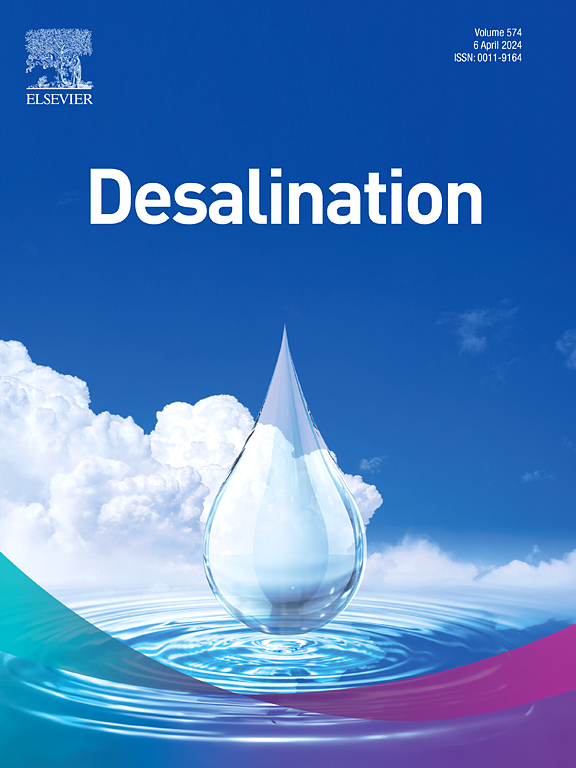Particle size reduction of manganese-doped Prussian blue analogues enhanced hybrid capacitive deionization performance
IF 8.3
1区 工程技术
Q1 ENGINEERING, CHEMICAL
引用次数: 0
Abstract
The hybrid capacitive deionization (HCDI) technology has demonstrated improved efficiency compared to conventional capacitive deionization (CDI). Prussian blue analogues (PBAs) possess high capacity and rapid ion transfer capability, recognized as promising materials for HCDI electrodes. PBAs with a more uniform morphology and smaller particle size could enhance contact with the electrolyte, and facilitate rapid ion transport. It has been observed that adding manganese can reduce the particle size of these materials and lead to a more uniform structure. In this study, nickel-based Prussian blue analogues were modified with varying manganese doping ratios to enhance desalination properties. The optimal desalination performance was achieved when the atomic ratio of manganese to nickel was 3:7 (MNP-3), yielding a maximum deionization rate of 20.59 mg·(g·min)−1 and a high desalination capacity of 58.82 mg·g−1 in batch mode testing at an applied voltage of 1.2 V in a 500 mg·L−1 NaCl feed solution. Furthermore, MNP-3 exhibited higher specific capacitance and smaller transfer resistance than the undoped material, which were advantageous for sodium ion storage. This study emphasizes the impact of particle size on HCDI performance, providing valuable insights for future HCDI application studies.

求助全文
约1分钟内获得全文
求助全文
来源期刊

Desalination
工程技术-工程:化工
CiteScore
14.60
自引率
20.20%
发文量
619
审稿时长
41 days
期刊介绍:
Desalination is a scholarly journal that focuses on the field of desalination materials, processes, and associated technologies. It encompasses a wide range of disciplines and aims to publish exceptional papers in this area.
The journal invites submissions that explicitly revolve around water desalting and its applications to various sources such as seawater, groundwater, and wastewater. It particularly encourages research on diverse desalination methods including thermal, membrane, sorption, and hybrid processes.
By providing a platform for innovative studies, Desalination aims to advance the understanding and development of desalination technologies, promoting sustainable solutions for water scarcity challenges.
 求助内容:
求助内容: 应助结果提醒方式:
应助结果提醒方式:


